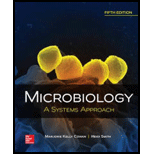
Concept explainers
To describe:
Hepatitis B infections caused by a needlestick during a dental procedure by using the terms given in question, also determine the mode of transmission of the following disease.
Introduction:
Hepatitis B is a disease of liver which is caused by infection of virus. The virus responsible for hepatitis B is HBV (hepatitis B virus) and it belongs to Hepadnaviridae family of viruses.
To describe:
Pneumocystis pneumonia in an AIDS patient and also determine the mode of transmission of the following disease.
Introduction:
HIV is human immunodeficiency virus which causes a very serious disease called AIDS (acquired immunodeficiency syndrome). HIV interferes with the immune cells of the body and reduces the ability to fight infections.
To describe:
Bubonic plague that is acquired through the bite of a rat flea, and also determine the mode of transmission.
Introduction:
Bubonic plague is a type of bacterial infection caused by bacterium Yersinia pestis. This plague may have deadly effects. It can be spread from the bite of an infected rodent or flea. The plague is characterized by symptoms like fever, headache, swollen and painful lesions, and vomiting.
To determine:
Hantavirus pulmonary syndrome infection acquired while vacationing in a log cabin.
Introduction:
Hantavirus pulmonary syndrome is a viral infection which develops its symptoms within a week. It is a fatal, respiratory disease that occurs in human by infection caused by hantaviruses.
To describe:
The disease salmonellosis and also determine the mode of transmission.
Introduction:
Salmonellosis is a type of bacterial infection caused by the strain of Salmonella bacterium. This bacterium mainly transmitted to humans through contaminated food or water. The infection results in typhoid fever and sometimes it causes severe deadly disease.
To describe:
The undiagnosed chlamydiosis and also determine the mode of transmission of the disease.
Introduction:
Chlamydiosis is a common sexually transmitted disease. It is caused by the bacteria called Chlamydia trachomatis. It can infect both men and women. Chlamydia doesn’t usually cause any symptoms.
To describe:
The disease mononucleosis that is transmitted via a shared drinking glass.
Introduction:
Respiratory droplet and saliva is the exit route for several viruses, including those of mumps, rabies, and infectious mononucleosis. Mononucleosis includes a viral disease caused by Epstein-Barr virus.
To describe:
The disease neonatal gonorrhea and also determine the mode of transmission of this disease.
Introduction:
Gonorrhea is a sexually transmitted disease which causes infection in the reproductive part of females. This infection can also pass to the newborns known as neonatal gonorrhea.
Want to see the full answer?
Check out a sample textbook solution
Chapter 13 Solutions
Microbiology: A Systems Approach
- Describe each of the following infections using correct technicalterminology. (Descriptions may fit more than one category.) Useterms such as primary, secondary, nosocomial, STD, mixed, latent,toxemia, chronic, zoonotic, asymptomatic, local, systemic, -itis, -emia.Caused by needlestick in dental officePneumocystis pneumonia in AIDS patientBubonic plague from rat flea biteDiphtheriaUndiagnosed chlamydiosisAcute necrotizing gingivitisSyphilis of long durationLarge numbers of gram-negative rods in the bloodA boil on the back of the neckAn inflammation of the meningesarrow_forwardtopic: chain of infection Differentiate between airborne and droplet infection. Differentiate between direct and indirect contact in the modes of transmission of diseasearrow_forwardDefine the following terms: Arthropod-borne infections Community acquired infections Iatrogenic infectionsarrow_forward
- Sleeping sickness (African trypanosomiasis) Mode of Transmission: Hallmark of Infection: Drug of Choice: American trypanosomiasis (Chagas disease) Mode of Transmission: Hallmark of Infection: Drug of Choice:arrow_forwardGive two disease caused by bacteria with definition, and briefly discuss the causative agent, transmission, signs and symptoms, portal of entry and exit, management (prevention and treatment).arrow_forwardExplain what is happening during each stage of infection. Compare and contrast: systemic, local, and focal infections; primary versus secondary infections; infection versus intoxication.arrow_forward
- Define the following types of infection. Endemic Epidemic Sporadic Exoticarrow_forwardWhat is black Sigatoka disease? Discuss and describe comprehensively. Be able to include the causative agent, symptoms, and the mode of transmission.arrow_forwardWhat infections are determined / diagnosed by venipuncture? Discuss the infection as to etiologic agent, mode of transmission, symptoms, nursing care.arrow_forward
- Describe and explain what is meant by the following (physiological disease, psychological disease and social disease). Outline some examples of each. Explain what is meant by communicable and non-communicable disease and provide examples of eacharrow_forwardFor the following diseases, mention the causative organism, category to which the organism belongs, symptoms as well as possible treatment option for the following diseases in a table, the symptoms and treatment options should be written pointwise: S.No. Disease Causative Category Symptoms Treatment organism/ options causes 1 Тyphoid 2 Pneumonia Common cold 4 Malaria Amoebiasis Ascariasis 7 Filariasis Ringworms 9 AIDS 10 Cancerarrow_forwardState the four most common types of health-care associated infections. List six types of patients who are especially vulnerable to health care-associated infections. State the three major contributing factors in health-care associated infections. differentiate between medical and surgical asepsis.arrow_forward
 Comprehensive Medical Assisting: Administrative a...NursingISBN:9781305964792Author:Wilburta Q. Lindh, Carol D. Tamparo, Barbara M. Dahl, Julie Morris, Cindy CorreaPublisher:Cengage Learning
Comprehensive Medical Assisting: Administrative a...NursingISBN:9781305964792Author:Wilburta Q. Lindh, Carol D. Tamparo, Barbara M. Dahl, Julie Morris, Cindy CorreaPublisher:Cengage Learning
